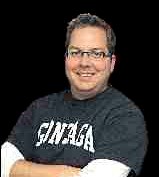I am frequently asked by clients either before or during counselling, “How does counselling work?” I respond with the 40-30-15 rule created by Scott Miller. But before we get to that, it is important to understand what a counsellor’s background is to better understand how the rule is applied.
A counsellor is part of the helping profession. A helper is anyone who looks after the mental and emotional well-being of their client. There are many kinds of helpers with varying degrees and credentials. There are counsellors, social workers, psychotherapists, therapists, marriage and family therapists, psychologists, coaches and so on.
Typically individuals who pursue these paths have been told that they are “good listeners” because of their natural helping abilities. They then acquire education to build upon and hone their natural abilities. Training programs are less than a year, two years, four-year degrees, two-year master’s degree or higher.
It is commonly recommended that private helpers seek both a professional body and regulatory body where available. A professional organization has the best interest of the helper in mind, whereas a regulatory organization has the best interest of the client or consumer in mind. Both lend credentials to distinguish adequate training in helpers.
A helper, typically with less than two years training, is referred to as a natural helper, as they are relying on their natural abilities to have empathy and support. A skilled helper is a master’s-level or higher trained therapist with the natural helping abilities and typically is a member of a professional or regulatory body. However, an often-missed category is a trained helper that doesn’t have the natural abilities to connect and form a relationship.
And this is where the 40-30-15 rule comes in.
There is such a focus on the technique and skill level of a helper, when only 15 per cent of the effectiveness is dependent on their skill. Which is not to undermine its importance, you gain that 15 per cent when the helper is skilled.
Therapy success has two large portions: the client (40 per cent) – meaning their motivation and life influences; and the relationship (30 per cent) between helper and client. The remaining 15 per cent is a combination of hope and expectations that the helper sets.
A skilled helper, in theory, should be able to employ the relationship (30 per cent), skill (15 per cent) and hope (15 per cent); which is 60 per cent of the process, the rest (40 per cent) is up to the client.
A natural helper, again in theory, should be able to employ the relationship (30 per cent) and hope (15 per cent); which is 45 per cent of the process, bringing about as much to the process as the client (40 per cent).
A trained helper without natural abilities should be able to employ the skill (15 per cent) and hope (15 per cent); which is 30 per cent of the process, lacking the relationship. The client, in this scenario, brings more to the table (40 per cent) than the helper.
With that, what makes counselling work? Ensuring that you as a client are ready for counselling and you have found a naturally skilled helper you are willing to work and build relationship with.



